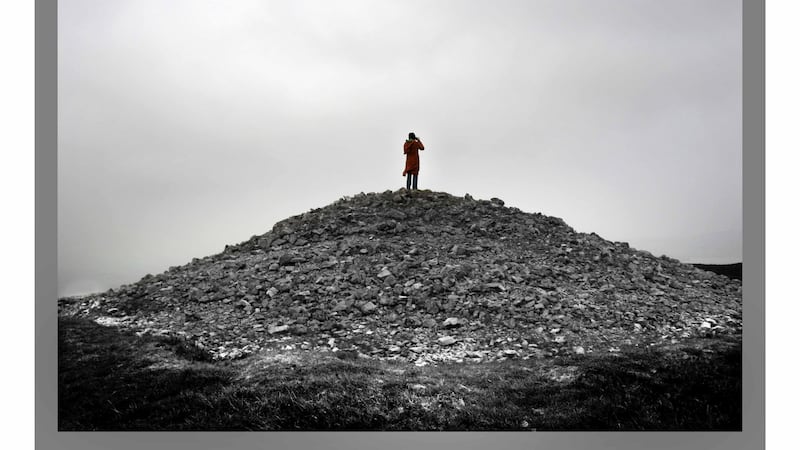They don’t have much to say for themselves up at Carrowkeel. They have lain for five thousand years dead in their tombs up here in the Bricklieve mountains in County Sligo, and they seem happy enough with the situation. Certainly, they have a wonderful aspect – turn a slow swivel on your heel and you can take in views of Sligo, Leitrim and Roscommon, and on a clearer day you can see to the mountains of Donegal and Mayo. It was not just a place of entombment: there was a living settlement here also, one of the oldest ever dated in Europe, and you can see the practical sense of the site – you would have been able to see what was coming up the hill at you from just about any direction. You could have thrown stones and waved sticks and roared abuse at them. (Can we even begin to imagine the language that was used?) Usually, now, it is just a couple of hale hillwalkers you will see coming, with their cheerful rayon jackets and their expectant little smiles, but this year, the way things have been with the weather, the walkers are scarce on the ground, and a lot of the time I have had the place to myself.
The view has never looked quite like this before. Everywhere in the December of 2015 there is an odd grey shimmering, a kind of low throb of refraction on the air: it is the play of grey light on the vast new pools of sitting water. It has the look of a nautical kingdom down there, as if Lough Arrow has mothered a thousand infant lakes, and quickly they have set off across the land. Each of the new lakes has been entitled by the stiff Atlantic winds to its own tidal system, and the waves ebb and return across what once were reed fields, and what’s left of the reeds move their pale gold in a slow response to the wind and the sound that this makes is like the softest applause. The air is warm, almost humid, and the rain hasn’t stopped, really, since the first of November. There are an incredible amount of swans around, and these are absolutely royal, at once clearly the regents of this watery new realm – a swan sailed across my garden last week and the only proper response was to curtly bow.
I’ve been coming to Carrowkeel, up the long, twisting road by the donkey sanctuary, for the past eight years now. I had decided to live beautifully, without fear or anxiety, and it seemed like the proper place for a ritual re-engagement with the world and its natural things. Falcons soar often here; hares thump out their runs across paths that must have first been beaten down a millennium ago; that distant drone is the N4 but it is far enough away to be just a rumour of itself. Usually I sit on one of the mounds of stones that mark the tombs – as though in rehearsal for a bad Beckett play – but sometimes I crawl into the tombs and try and make out the shapes in the murk. The naturalist Robert Lloyd Praeger was better prepared. He crawled in with lit candles fixed to his cap. He opened the tombs in 1911 and was the first visitor in three or four thousand years. He wrote:


A light brownish dust covered all ... There were beads of stone, bone implements made from Red Deer antlers, and many fragments of much decayed pottery. On little raised recesses in the walls were flat stones, on which reposed the calcinated bones of young children.
Listen for their cries in the breeze that moves through the reeds and you might almost convince yourself. Carrowkeel is at once a magical and a very sad place.
Most days it has been too warm to seem like a proper winter but when dusk falls, and what grey light there is starts to fade, a nice evil chill comes up with the evening dampness and there is such a long dark night ahead of us again. Like all deluded romantics, I find winter to be the sweetest time, and here at its heart, on the shortest day of the year, as we wait for the great wheel to turn, I think it’s right to feel wistful for its imminent passing. It’s the time in our lives to look inward and to huddle by the fire and to remember our significant dead.
You should find a high place to mark the solstice today. We all deserve to put ourselves at a lofty remove from the drone of the everyday and the screeching of the commerce and the dim white noise of the electronica. Find a place to detach yourself and re-connect, and watch the last light of the turning year fade first to a deeper grey, and then to pitch-black, and then to nothing, just nothing at all.












